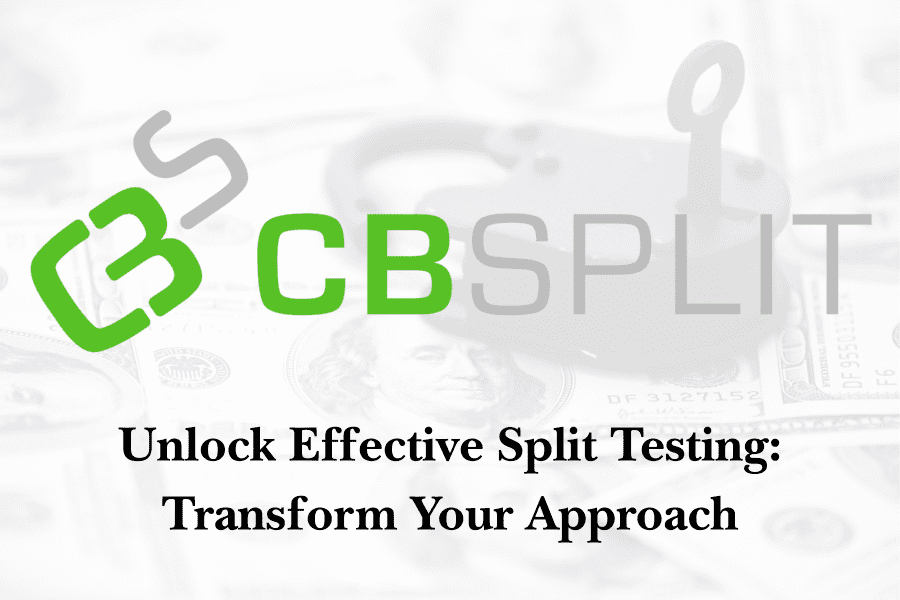Unlock Effective Split Testing: Transform Your Approach
Published on:

Split testing, also known as A/B testing, often gets a bad rap. Many developers and engineers approach it with skepticism, dismissing it as cumbersome or ineffective. Yet, when executed with precision and the right mindset, it can become a powerful tool for data-driven decision-making. This article dives deep into the nuances of split testing, revealing how to harness its full potential and overcome common pitfalls. Exploring concepts like split testing best practices is key.
Table of Contents
- Why Split Testing Sucks
- Rethinking Split Testing
- Designing Experiments That Matter
- Leveraging Statistics for Clarity
- Tools and Technologies
- Case Studies and Real-World Examples
- Best Practices and Common Pitfalls
Why Split Testing Sucks
Split testing can be frustrating for several reasons. Many teams dive in without a clear hypothesis, leading to ambiguous results. This lack of direction often causes confusion, as developers find themselves sifting through mountains of data without actionable insights. Moreover, the statistical nuances involved are frequently overlooked, resulting in unreliable conclusions.
Another issue is the overreliance on tools that promise to do it all, but often fall short in customization and flexibility. These tools may offer a one-size-fits-all approach, but when the complexity of real-world applications kicks in, they can quickly become a hindrance rather than a help.
Rethinking Split Testing
To transform your split testing approach, start by revisiting your mindset. Split testing is not just a checkbox in your development cycle; it’s a strategic process that requires thoughtful planning and execution. Begin by defining clear, specific hypotheses. Ask yourself:
- What are we trying to achieve with this test?
- How will we measure success?
These questions are crucial in setting the stage for meaningful experimentation. Consider the test's scope and potential impact on your system. Small, iterative tests often yield better insights than sweeping changes.
Designing Experiments That Matter
Designing experiments requires a delicate balance between creativity and rigor. The key is to design tests that are both meaningful and feasible. Here’s how:
-
Start with User Stories: Ground your tests in real-world scenarios by creating user stories. This ensures that your tests are aligned with user needs and business goals.
-
Define Variables Clearly: Identify independent and dependent variables. In a web application, this might mean testing different button colors (independent variable) to see their effect on click-through rates (dependent variable).
-
Control for External Factors: Use control groups to isolate the impact of your changes. This ensures that observed effects are due to the test variables and not external factors.
-
Iterate Rapidly: Adopt a cycle of continuous improvement. Analyze results, refine hypotheses, and run subsequent tests based on previous findings.
Leveraging Statistics for Clarity
Statistics are the backbone of any successful split test. Yet, many teams overlook this critical aspect. Understanding statistical significance, confidence intervals, and p-values is essential. Here's a quick primer:
- Statistical Significance: Determines if the observed effect is likely due to the test rather than random chance. A common threshold is a p-value of less than 0.05.
- Confidence Intervals: Provide a range within which the true effect size lies, offering a more nuanced view of your results.
- Power Analysis: Helps determine the sample size needed for your test to detect an effect, avoiding underpowered tests that lead to false negatives.
Here's an example in Python to calculate a p-value using the scipy library:
from scipy import stats
# Example data for two groups
group_a = [20, 22, 21, 19, 20]
group_b = [25, 26, 25, 24, 23]
# Perform an independent t-test
t_stat, p_value = stats.ttest_ind(group_a, group_b)
print(f"T-statistic: {t_stat}, P-value: {p_value}")
Tools and Technologies
Choosing the right tools can make or break your split testing efforts. Here are some top picks:
- Google Optimize: A robust platform for beginners, offering integration with Google Analytics.
- Optimizely: Known for its flexibility and powerful targeting capabilities, ideal for more complex tests.
- Apache Airflow: For those comfortable with coding, use Airflow to orchestrate and automate your experiments.
Consider custom solutions if existing tools don't fit your needs. Tailoring your testing framework can provide the flexibility and control required for intricate tests.
Case Studies and Real-World Examples
Consider the example of a major e-commerce company that increased its conversion rate by 15% through strategic split testing. By focusing on optimizing the checkout process, they tested different layouts and payment options. The key takeaway was the importance of testing elements that directly impact user experience and business outcomes.
Another instance involved a SaaS company that used split testing to refine its onboarding process. By testing different tutorial flows, they identified the most effective way to reduce churn and increase user engagement.
Best Practices and Common Pitfalls
To maximize split testing effectiveness, adhere to these best practices:
- Prioritize Tests: Focus on high-impact areas first. Not all tests are created equal, so invest resources where they matter most.
- Avoid Confirmation Bias: Approach tests with an open mind. Let the data guide your conclusions, even if they contradict expectations.
- Document Everything: Maintain comprehensive records of your tests, including hypotheses, methodologies, and results. This transparency aids in future decision-making and learning.
Beware of common pitfalls such as running tests without adequate sample sizes or ignoring the statistical significance of results. These missteps can lead to erroneous conclusions and misguided strategies.
By shifting your perspective and refining your approach, split testing can evolve from a cumbersome task to a strategic advantage. Embrace these insights and techniques to unlock the full potential of your experiments, driving innovation and success in your projects.